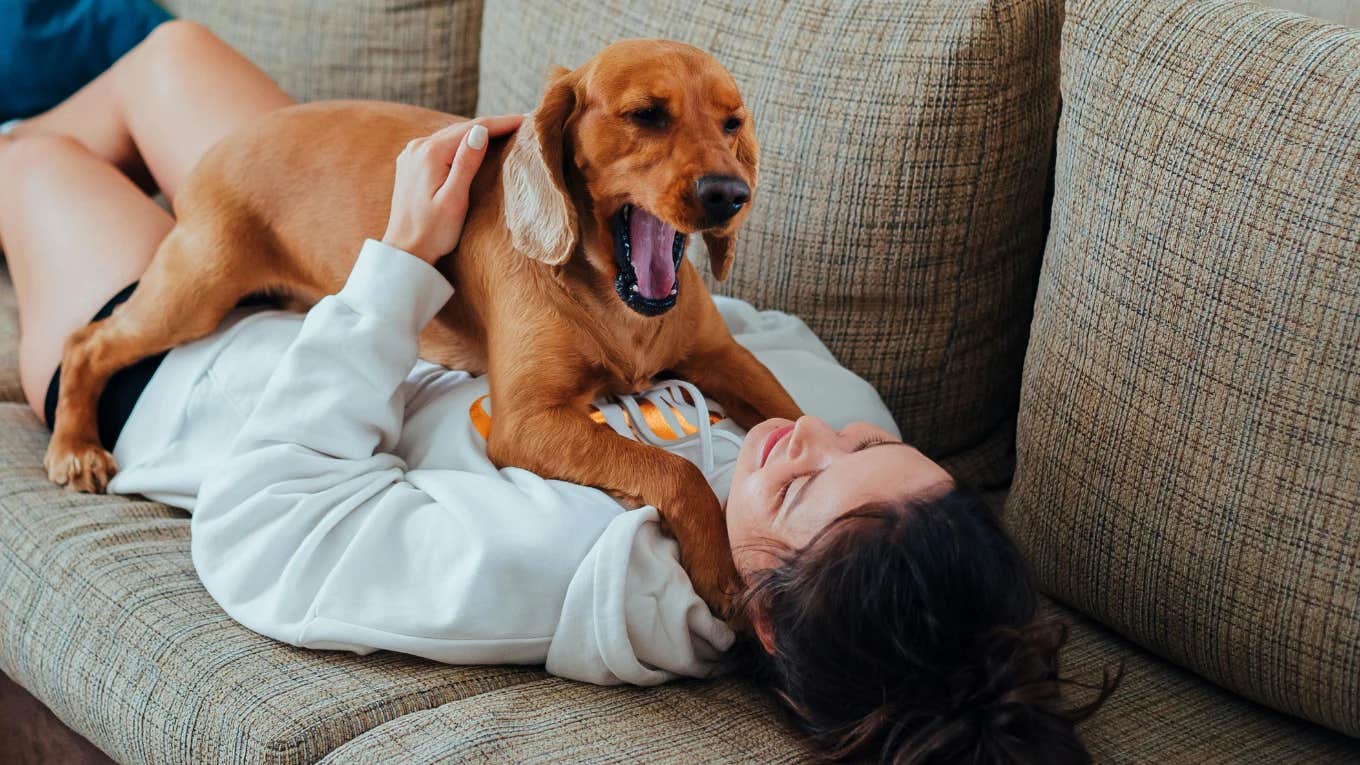4 Subtle Signs Your Dog Is Trying To Tell You Something Important
Pay attention to your pup's behavior.
 Ivan Babydov / Pexels
Ivan Babydov / Pexels Dogs often bark, whimper, whine, or growl to let their owners know when they need something, whether it be dinner, tummy scratches, or a bathroom break in the great outdoors. But sometimes, dogs use non-vocal cues to show that something out-of-the-ordinary is going on with them.
Here are 4 subtle ways your dog is trying to tell you something important:
1. Yawning
Yawning in dogs is normal behavior, most often indicating that they’re bored or tired. But if your dog is yawning excessively, it could be a sign of stress.
A stress yawn is usually wider, slower, and lasts longer than a sleepy yawn. Your dog uses these yawns as calming mechanisms when they’re feeling anxious, stressed, or threatened. Doing so helps them self-regulate.
Yet yawning extends beyond doggie behavior into similar human behavior. Puppy parents sometimes yawn for the same reasons.
If we’re feeling anxious or stressed, our cortisol levels increase, which means we’re more likely to find ourselves yawning, too. It helps our bodies and brains release some of the stress and anxiety we’re feeling.
2. Scooting
If you see your dog pressing their backside to the floor and pushing themselves forward across your nice, clean rug, it could mean that something’s going on with their glands.
The best thing you can do is take your furry friend to the vet for a check-up.
 Photo: Julissa Helmuth / Pexels
Photo: Julissa Helmuth / Pexels
3. Chasing their tail
This action might seem like it’s just some harmless fun for your pup, but it could also signify that they’re not getting enough mental or physical stimulation throughout the day.
The amount of exercise a dog needs depends on various factors, like your dog’s breed and age.
In general, a dog that’s under 15 pounds should get 20 minutes of exercise at one time. Larger breeds should walk for 30 to 60 minutes, yet some dogs, like working breeds, might need to get their energy out in other ways.
Keeping your furry friend engaged is crucial to their health and well-being, and is a great way to show them just how much you love them.
4. Licking their joints
A moderate amount of licking is within the range of normal grooming behavior. It’s common for dogs to lick certain parts of their furry little bodies: Their paws, bellies, and in between their toes.
But licking too much can also be indicative of an underlying issue.
Your dog might be licking excessively if you notice they have hair loss or skin redness in the areas that they’re licking. Another way to know if your dog’s licking has become a problem is if they moan or whimper while they do it, or if they are unable to focus on other things, like napping or playing, because they’re so focused on licking.
Excessive licking can be a sign of anxiety or boredom. If your dog is engaging in excessive self-grooming during downtime, it might mean that they need more exercise or activity to keep themselves busy.
 Photo: MDV Edwards / Shutterstock
Photo: MDV Edwards / Shutterstock
However, licking can also mean that they’re in pain or experiencing discomfort, especially if they’re repeatedly licking their joints. Osteoarthritis, also called Degenerative Joint Disease, is a progressive inflammation of joints caused by deteriorating cartilage.
The American Kennel Club notes that osteoarthritis is common in dogs as they age, yet some factors predispose certain dogs to the disease. Larger breeds tend to be susceptible, as do overweight dogs and dogs with repetitive stress injuries.
While osteoarthritis is painful for pups, it’s also a disease that can be managed with certain medications and physical therapies.
Our dogs might not have the power of speech, but they’re still incredibly communicative.
Knowing the different tactics that your canine companion uses to let you know when they need extra tender loving care is just one more way you can show up for your pup and give them the best life possible.
Alexandra Blogier is a writer on YourTango's news and entertainment team. She covers social issues, pop culture and all things to do with the entertainment industry.
